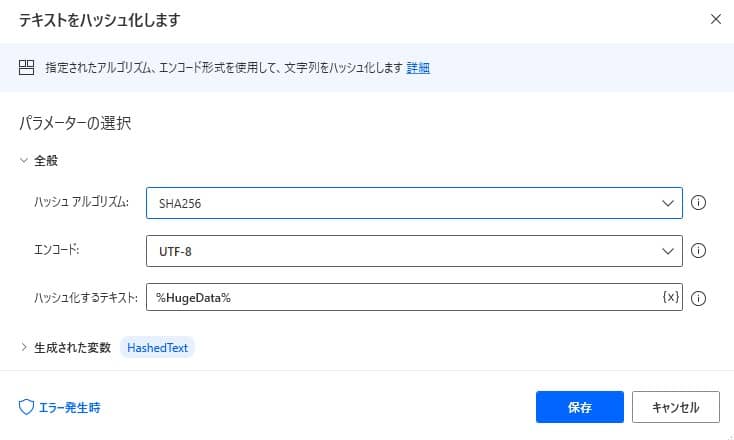Calculation of hash values
This time, I will explain how to have a hash of text and file data and calculate the hash value.
📄️ Decryption of files and text
There are some actions related to security and encryption.This section describes how to decrypt encrypted text data.
📄️ Cryptence of files and text
It is assumed that it will work not only on on -premises software but also with cloud services.There are some actions related to security and encryption.Explains how to encrypt text files.
About hash
Hashing is a technology that generates a unique string through a specific function.
If you have a hash of the same data, the same hash value is calculated, but the hash value is different for different data.
It can prove that the data is the same without confirming that all the data is completely matched, so it is used to make sure that the data is not falsified.
The original data cannot be derived from the hash value.
Action to use
This time, we use the action of "have a hash of text".
"Hashed text" Action details
The action has the following parameters.
| Parameter name | value |
|---|---|
| Hash algorithm | Algorithm used for hashe |
| Encoding | Hashed text character code |
| Hashed text | Text to be hashed |

Implement the action
Add a sample flow with copy and paste
This time, as a sample, we have prepared a flow that calculates the hash value from the specified text data.
Copy the following code and paste it on the edit screen of Power Automate Desktop to add the target action.
SET HugeData TO $'''%'Data that is too large to transfer'%'''
Cryptography.HashText HashAlgorithm: Cryptography.HashAlgorithm.SHA256 Encoding: Cryptography.EncryptionEncoding.UTF8 TextToHash: HugeData HashedText=> HashedTexta
Operate and implement Power Automate Desktop
From "Search for action", enter "Textbooks".
Set the parameter as follows
Parameter name value Hash algorithm SHA256 Encoding UTF-8 Hashed text %"Text to be hashed"% By execution, the result of hashed the specified text data is stored in the variable.
The exception that can occur
An error may occur at the time of the hashed.
We recommend that you implement block processing.